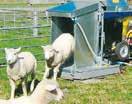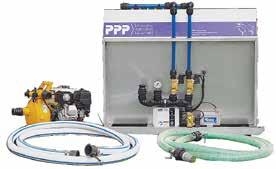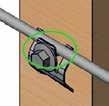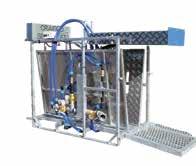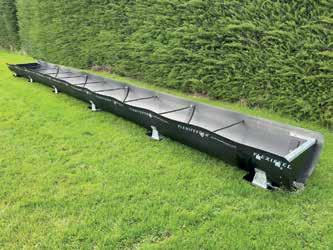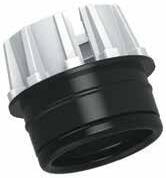

MACHINERY & PRODUCTS





ACT MP and primary production select committee chair Mark Cameron says he welcomes the investigation.
THE COMMERCE Commission’s move to investigate commitments made by major banks under the NetZero Banking Alliance is being hailed by farming leaders.
HUNDREDS OF people lined Te Kuiti’s main street recently for the Great New Zealand Muster running of the sheep.
Rural Communities Minister Mark Patterson, who took part being driven along the muster’s corridor, said it was a celebration of sheep, farmers and the role they play in New Zealand communities and the economy.
Supporting the NZ wool industry is a key part in the Government’s plan to double the value of NZ exports.
“The recent bar that we have crossed is that wool prices now cover the shearing costs, which is something that we have been working hard at to change, but we know there is much more to be done. I am more confident than ever that we can turn around the fortunes of wool,” says Patterson.
“Many in the constituency have raised alarm at this practice and full and open transparency about the Net Zero Banking Alliance and its practices is now timely,” Cameron told
The Net Zero Banking Alliance is an international group committed to aligning their lending, investment, and capital markets activities with net-zero greenhouse gas emissions by 2050.
Federated Farmers claim the five major banks - ANZ, Westpac, BNZ, Rabobank and ASB - have aligned their lending policies and are engaged in “cartel-like behaviour” in terms of their net zero emissions targets. The farmer lobby also claims that the five banks’ policies are linked to their affiliation with the Net-Zero Banking Alliance. It wrote to the Commerce
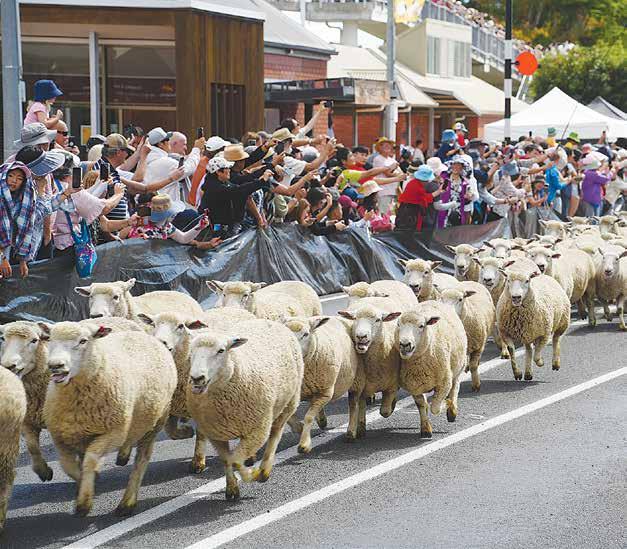
Commission calling for an investigation. The banks have denied the claim.
A Commerce Commission spokesperson told Rural News that following concerns raised with the Commission, they’ve opened an investigation to determine whether the adoption and alleged alignment of net-zero strategies and targets by banks, including commitments made under the Net-Zero Banking Alliance, could breach section 30 of the Commerce Act.
“We are continuing to obtain information from relevant parties to determine whether there is conduct that breaches the Act.
“As this is an active investigation, we’re unable to make any further comment, including how long the investigation might take.”
Federated Farmers banking spokesman Richard McIntyre points out that following Feds’ complaint in December, the Commerce Commission made some initial enquiries. “As a result of that they have decided to open an investigation under section 30 of the Commerce Act which relates to cartel behaviour,” he told Rural News
“It seems that during their initial enquiry they smelt enough smoke to support a more formal investigation looking for fire – and I think they might just find something.
“This is an incredibly serious issue for the banks at this point. If they are found guilty, their directors could face criminal charges. The banks could also be on the hook for huge fines.
“We’re calling on New Zealand banks to do the right thing and withdraw from the Net Zero Banking Alliance,” McIntyre says.












1-10
11
12
12-14
15
16
AND
TRADER 19
HEAD OFFICE
Lower Ground Floor, 29 Northcroft Street, Takapuna, Auckland 0622
Phone: 09-307 0399
Fax: 09-307 0122
POSTAL ADDRESS
PO Box 331100, Takapuna, Auckland 0740
Published by: Rural News Group
Printed by: Inkwise NZ Ltd
CONTACTS
Editorial: editor@ruralnews.co.nz
Advertising material: davef@ruralnews.co.nz
Rural News online: www.ruralnews.co.nz
Subscriptions: subsrndn@ruralnews.co.nz
PETER BURKE
peterb@ruralnews.co.nz
THE DROUGHT in western parts of the North Island is reaching crisis point with many farmers from Northland to Taranaki having to truck in water and feed for their stock at great expense.
As Rural News goes to press, many areas have had as little as 30% of the rainfall they would normally receive at this time of the year, causing aquifer levels to drop, forcing farmers, where they can, to drill new deeper wells.
Ministry for Primary Industries (MPI) director of on farm support, Dr John Roche, says there’s been no appreciable rain since the drought declarations were made a month ago.
“The situation is especially bad in the southwest of Northland south of the Hokianga but there are other places in Northland very dry as well,” Roche told Rural News.
“The situation is similar with the Waikato - King Country and certainly Taranaki.
“The whole western seaboard of the

SUDESH KISSUN
sudeshk@ruralnews.co.nz
WITH TWO months until National Fieldays at Mystery Creek, organisers say 90% of sites have been booked by exhibitors.
A diverse range of exhibitors, from large corporates to local agribusinesses, have bought sites, says New Zealand National Fieldays Society acting chief executive
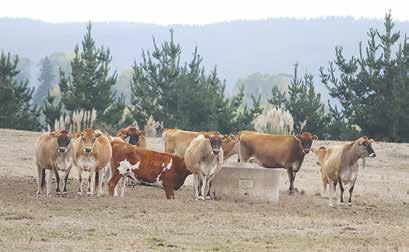
WHILE DAIRY and red meat farmers are struggling with the drought in Northland, kumara growers aren’t complaining.
Water tables are very low, meaning wells and bores have dried up and farmers are trucking in water and feed.
North Island is very dry,” he says. Roche says the situation is compounded by the fact that there is no ‘drought busting’ rain forecast. At the same time soil and air temperatures are dropping and the window for growing grass is declining.
In most regions, Roche says there are places where the ground is rock solid, making re-grassing difficult if not impossible.
He says it raises the issue of the need for more water storage because
the climate is getting hotter and drier. He says his team is linking up with various regional advisory groups as well as B+LNZ, DairyNZ, Federated farmers and the Rural Support Trust to provide help to farmers. This involves running social events to get farmers off farm as well as seminars and, if required, one on one discussions for individual farmers.
“We are guided by regions and if they say they need more support, we’ll do more,” he says.
Warwick Simpson who has 40ha of land in Dargaville says the dry conditions are making harvesting easier. He says this is because the kumara are dry and coming out of the ground nice and clean. He says the only potential problem is that the vegetables could get damaged coming out of the hard ground.
“But that is a minor, not a major issue,” he says.
Simpson says if it was wet right now, harvesting the kumara crop could be difficult. He says for a start, the kumara would have mud attached to it and if it’s really wet it would be difficult to get a machine in to get them out of the ground.
He says the present dry conditions will not affect the growth of the kumara.
Taryn Storey.
Following a board directive, 2025 exhibitor rates have been only “CPI adjusted” while entry prices remain the same, says Storey.
Fieldays favourites like the Rural Advocacy Hub, the Forestry Hub, the Careers & Education Hub and the Health & Wellbeing Hub will return. Competitions and demonstrations include the 50th anniversary of the
famous tractor pull, fencing and excavators.
A new feature is the drone zone featuring latest agricultural drone technology, career opportunities and live demonstrations of on-farm drone applications. At the media briefing Storey also put out a call for volunteers to help run the four-day event.
Organisers are currently 48 people short of the 150 required every year to run
Fieldays. The minimum age to volunteer for Fieldays is 16.
Storey says like other organisations, they have also struggled to attract volunteers this year.
“We do need the help of volunteers to run the event safely,” she says.
Asked about the number of visitors expected at this year’s event, Storey says she won’t be making predictions.
She pointed to the 2024
Fieldays survey, University of Waikato Economic Impact Report, which shows 106,000 people passed through the gates last year – 45% female and 52% male.
Of the total visitors, 52% were between 30 and 59 years old. The top three reasons for attending Fieldays were: good deals, purchasing products or services, and researching information on products and services.
High Flow
Compact/Robust
New Pilot Flow Filter
Side/Bottom Mount • Detach to Clean

• For Water Storage Tanks
• Adjustable levels from 50mm-2.5m
• Minimises pump operation
•Available in 20/25/32/50mm
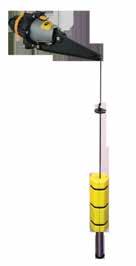
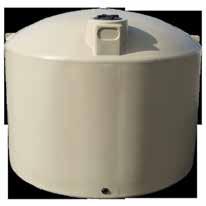

Stainless steel bracket and Shaft • Fits plastic and concrete tanks • Rugged and long lasting

THE COMMERCE Commission is weighing up whether or not it should deregulate the copper network, still used for internet and landline in 80,000 rural premises.
The regulation was introduced in the 2000s with the express purpose of preventing a natural monopoly over internet connectivity.
This allowed the Commerce Commission to set price and non-price access terms for the service.
Subsequently, in 2016, the Commission reviewed the relevant copper services, finding there weren’t grounds to commence an investigation because they were still in use.
Now, the Commission argues there have been
numerous technological developments in the industry which mean that most New Zealanders have access to modern fibre networks or alternative technologies like satellite internet.
Already, regulation of the copper network has been removed in urban areas where fibre or another form of internet connection is more available.
However, this would specifically impact rural New Zealand which has largely relied on the copper network in the past.
Chorus, which manages the network, previously announced its intention to shut down the copper network in all areas where fibre is available due to its age.
The Commerce Commission’s draft recommendation says that

deregulating the copper network would enable Chorus to withdraw copper network services used by consumers in rural areas.
“Since Chorus plans to stop using copper by 2030, we believe it is important to have a managed withdrawal process to protect rural consumers during any change,” the report says.
“Rural consumers will not benefit from the pro-
tections of the Copper Withdrawal Code (CWC), which was created to help manage the phase-out of copper in urban areas. We think it is important to extend CWC-type protections into non-fibre areas.”
The Commission says that this extension could be implemented either through legislative change or through commercial undertakings by Chorus. Currently, approx-
imately 80,000 rural premises have a copper line enabling them to access copper-based services.
Telecommunications commissioner, Tristan Gilbertson, says technological shifts have eroded the concerns that led to the network being regulated two decades ago.

Ride on tighter trails, navigate small spaces, and easily store and transport with the compact 142.2cm width.
www.polarisnewzealand.com
He says most rural consumers now have access to alternative technologies like Starlink and
lower cost wireless services.
Meanwhile, Chorus executive general manager of Fibre Frontier Anna Mitchell says the copper network is end of life technology, prone to faults.
She says it is not sustainable or suitable to meet the growing connectivity needs of New Zealanders.
“We have found that consumers are already increasingly turning to better technologies for connectivity such as fibre (where it’s available), wireless and satellite services,” Mitchell told Rural News
“Copper lines have a high fault rate, are vulnerable to weather events, and degrade over time,” she says. “For example, during the Auckland floods in January 2023, the fault rate


on copper was 10 times that of fibre and during Cyclone Gabrielle, eastern North Island premises on copper were eight times more likely to lose service.
“We want Kiwis to be on the best available connectivity to support digital growth and prosperity, and the reality is modern alternatives are better equipped now to provide the speeds and service quality required for current and future data needs.
“Chorus is committed to a clear consumer-centric retirement process that supports transition of customers still on copper to modern services.”
The Commerce Commission is seeking views on its draft regulation by 9 April, 2025. Crosssubmissions will then be invited by 5 May, 2025.
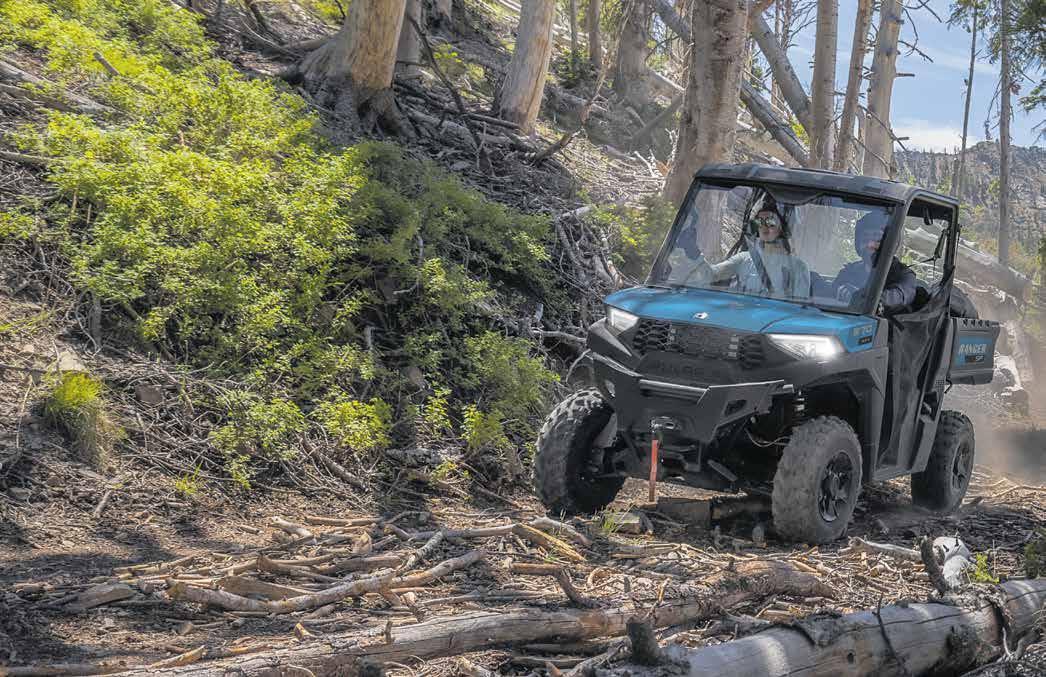
THERE’S GENERAL farmer backing for the government’s latest reforms of the Resource Management Act (RMA) but some are seeking clarity.
Federated Farmers are wholeheartedly backing the reforms announced last month, however, Beef+Lamb NZ and DairyNZ have questions. Under the reforms just released, the existing RMA will be replaced by two separate acts – one dealing with planning and the other on the natural environment.
Key issues for farmers relate to property rights, starting with the presumption that land use is to be ‘enabled’, meaning unless there is a significant impact on others or the national environment, there is no barrier.
The other major reform of note is that regional councils will no longer individually be able set rules as in the past and one national set of standards will apply over such matters as freshwater, biodiversity and coastal policy. What’s more, environmental limits will now be centrally controlled.
The overall emphasis is on ‘national standards’ rather than the
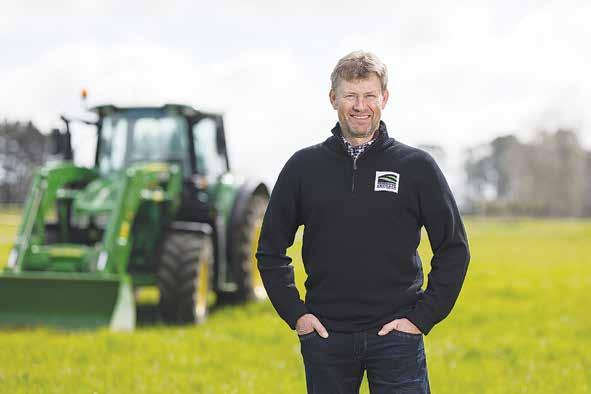
the unnecessary
are
DAIRYNZ SAYS the decision to replace the RMA is fine, but it wants more detail to make sure it’s truly beneficial to farmers.
DairyNZ’s Dr David Burger says the RMA impacts almost all facets of the dayto-day operations on farm, so it is critical that dairy farmers’ interests are heard.
“Reducing complexity, having more consistency, and greater controls on when and how land use can be restricted, are easy fixes that we strongly support. However, we have questions around the possible introduction of market tools and levies for resource use, particularly in relation to water quality,” he says.
Burger says DairyNZ research in this
area clearly show that it is impossible to put a ‘number’ on freshwater contaminants because of the complexity of the contaminants and the freshwater systems in each catchment.
“Changes to our resource management system need to ensure decision making around resource use and environmental limits recognises what fair and achievable water quality looks like and how this can be measured and delivered,” he says.
Burger says DairyNZ has been proactively developing solutions to freshwater quality issues within the existing framework and they need to be clear how it will work.
adds that the reforms will put an end to farmers spending too much time and money on resource consents and processes holding up investment in things like new water storage and rural infrastructure.
“The Government has delivered a pragmatic and common-sense plan that will put respect for property rights front and centre. This means that, unless farmers are doing something that will have a negative impact outside their property’s boundary, they can essentially do
BEEF + LAMB says while it supports the need for RMA reform, it’s seeking clarity from the Government on specifics of the proposed replacement that could potentially impact sheep and beef farmers.
Chair Kate Acland says they welcome the proposal’s emphasis on property rights and the move to place less emphasis on consenting and more on permitted activities. But Acland says they have concerns on some key points and need to see more detail on those.
“We’re strongly opposed to using mechanisms such as allocation of tradeable rights to individual farms, or cap and trade systems, as a way of addressing water quality issues. These mechanisms will be expensive, complex and unworkable,” she says.
Acland says they also have concerns about setting environmental limits at a national level, as B+LNZ’s work on the suspended fine sediment national bottom lines last year showed national limits can be deeply flawed and unachievable. She says using them as the basis for a system and relying on people to trade their way out is particularly worrying.
Acland says B+LNZ is also concerned about proposed changes to fines which could see a significant increase in what farmers could be fined for, regardless of whether any failings were intentional or not.
what they want on their own land,” he says.
Hooper says the new laws will mean that where a council takes a property right away, the council will have to pay compensation for the loss of property value. He says Feds have always pushed back on councils’ overzealous use of overlays like Outstanding Natural Landscapes (ONLs), Significant Natural Areas (SNAs), or Sites and Areas of Significance to Māori (SASMs).
“We’re talking about
little details like what colour their shed can be and needing a resource consent to put in a new fence, through to bigger hurdles such as being unable to develop or convert their land,” he says.
Hooper says Feds also welcomes the shift to national standards, while noting the Freshwater Farm Plan system is the ready-to-go standard for farming.
He says it’s never made sense for farmers to be farming by resource consent.
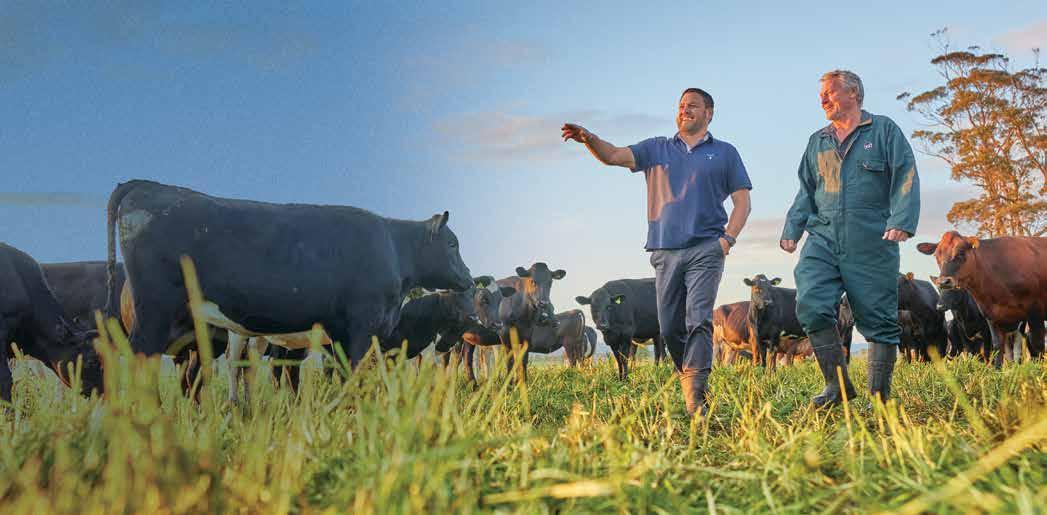
SUDESH KISSUN
QUOTAS AND free trade deals are saving the beef sector over $1 billion in tariffs each year, says Beef+Lamb NZ chief executive Alan Thomson.
While agriculture remains one of the most heavily protected sec-
tors in the world, NZ has significantly benefitted from the World Trade Organisation and free trade agreements (FTAs) over the last couple of decades, Thomson says.
“We pretty much would not be able to export to the EU, US or UK without these deals as their usual tariff rates on

sheep and beef products range from 30 to 100%.”
He was speaking at B+LNZ annual meeting in Rotorua last month.
Thomson, who took up his role five months ago, says trade remains a very important plank on B+LNZ’s work.
He notes that last year B+LNZ influenced
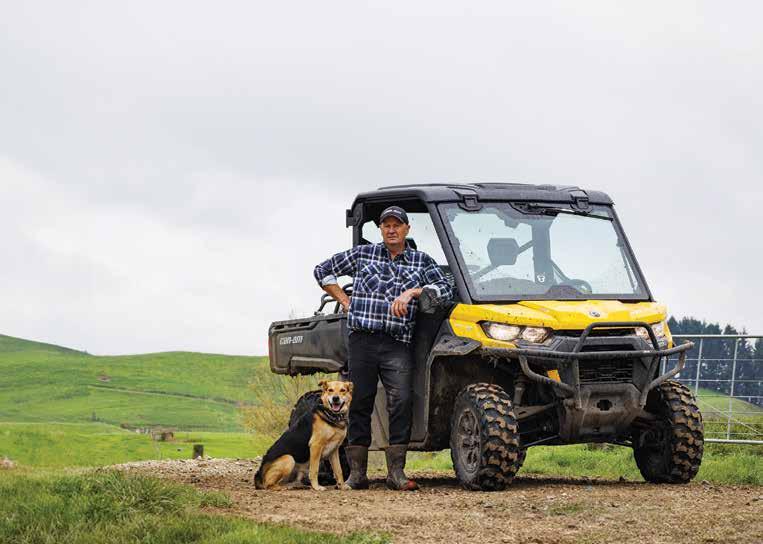
THE OUT the Gate event, organised with the B+LNZ annual meeting, attracted 240 people.
The session opened with Simon Quilty from Global Agritrends Downunder who explored the ripple effect in global red meat markets. He provided insights into how shifting supply and demand dynamics are shaping pricing and opportunities for New Zealand beef and lamb.
Quilty highlighted the exceptionally tight global protein supply, particularly for beef, which is driving strong demand and higher prices. He emphasised that the US has a critical need for New Zealand’s lean beef, with grinding meat playing a major role in meeting demand. The rising cost of US protein has also lifted lamb prices, creating further opportunities for New Zealand farmers.
He pointed to Australia’s recent liquidation of its breeding flock as a key factor in supply tightening, predicting a significant rebound as the country begins rebuilding. This tightening supply is “music to New Zealand farmers’ ears” as it supports stronger pricing.
Another keynote speaker, Shamubeel Eaqub, chief economist at Simplicity, examined the economic landscape and its impact on sheep and beef farming. He discussed major global shifts, including geopolitics, trade disruptions and climate challenges, noting that while New Zealand remains relatively stable, it is not immune to these pressures.
Eaqub suggested the best solution to weathering these pressures is the importance of investing in people – good management, strong workplace culture and ongoing training are essential for securing a skilled workforce in the face of an ageing population.
the EU decision to delay the implementation of anti-deforestation regulations, which would have disrupted global supply chains and threaten $200 million worth of NZ beef and leather exports.
“Additionally, we supported the Government’s successful negotiation of trade agreements with the UAE and the Gulf Cooperation Council. Trade will be a major focus this year as we navigate our way through the USA’s shifting trade policy, China’s beef safeguard action, and supporting New Zealand’s FTA negotiations with India.”
Thomson believes an FTA with India could be a game changer for the sheep industry as there aren’t as many markets for lamb as we do for beef. Indians are major consumers of sheepmeat, but this market is largely closed to us because of its current 30% tariff.
B+LNZ is also keeping an eye on the tariff wars brewing following the election of Donald Trump as US President. As Rural News went to print, many US trading partners were bracing for a new round of tariffs.
B+LNZ chair Kate Acland told the meeting that trade policy will be a
major priority in the year ahead as the sector navigates its way through the US tariff and China safeguard investigation process.
“Our staff in the UK and Europe, and in the US, mean we have a deep understanding of what is happening and good relationships with our counterparts which will be critical over the coming year as we navigate through these challenging times.
“We will be complementing this by lifting our visits to these countries. I recently visited the US to attend CattleCon and will return in a few months to Washington and then go onto Europe as it is vital we have strong relationships and an international presence at this time.”
Acland touched on the importance of having diverse markets for NZ red meat products.
“If there’s one thing the last two years have shown, it’s the importance of diverse market opportunities that our resilient sector can make the most of.
“As a relatively small economy, New Zealand has significantly benefited from international rules and systems such as the WTO and FTAs.”
tion at both end of the year,” he says.
DESPITE SILVER Ferns Farms (SFF) posting a $21 million dollar loss last season, chief executive Dan Boulton believes that better days are coming.
Boulton told Rural News 2024 was a challenging year for the company and represented a game of two halves.
He says in the first half of the year there was good livestock throughput, but market prices were low and in the second half of the year, livestock volumes fell as predicted and prices improved.
“So SFF were on the wrong end of the situa-
But Boulton says things have now changed for the better with improved livestock procurement and the company is now trading ahead of budget. He says SFF has implemented a range of cost saving measures and efficiencies. He says at the same time, prices are better and confidence is rebuilding in the sector.
“Talking to farmers and others at the recent agricultural shows, they are saying the fun is coming back into farming and that is really pleasing. Farmers are spending money again and we see that continuing as we

look out into 2025 and beyond,” he says.
Boulton says SFF was closely monitoring the geopolitical issues and in
particular what effect the Trump administration’s trade tariffs may have on NZ. He says they have been working up several
scenarios and planning to deal with any possibility which may arise. He says it’s not just the direct tariffs in NZ, but the con-
sequences that tariffs on other countries may have on the global supply of protein.
“We may see a significant shift of volume out of the US into other key markets which may cause a drop in prices globally. But at the same time, we can’t ignore that the fact that long term the demand for protein is going to outstrip supply and things will normalise in time,” he says.
Boulton says SFF will just have to be prepared for when and whatever announcement is made and respond quickly, which they have done historically. He says the aim will be to make sure that they minimise the impact on farmers.
“But we also can’t also ignore the fact that there may be some upside here for NZ if there are large tariffs on other countries. This could create a situation where there may be a bit more demand for our product in the US for example,” he says.
Boulton says they need to be just as agile to capture the upside as well which could have a positive outcome for our farmers and business.
“Everything is a little bit unpredictable but there is certainly going to be some interesting times in the next little period,” he says.
@rural_news
facebook.com/ruralnews



NEW ZEALAND farmers have been sold out, not just by the Government but by our own industry leaders. Instead of defending us, they have chosen political convenience and corporate appeasement over the truth. They have surrendered to an emissions (methane) reduction agenda that lacks both scientific and economic justification. Now, farmers face cuts that will cripple our sector, while those meant to stand up for us are negotiating our decline.
The role of methane in climate change has been grossly exaggerated. The IPCC AR6 Report states that ruminant emissions are overstated by 300%-400%. The Ministry for the Environment reports that total anthro-
pogenic methane from 1850 to 2022 caused just 0.0021°C of warming— only 0.000012°C per year. With livestock numbers already declining, Professor David Frame calculates future warming at just 0.000004°C per year, effectively zero. Kiwi farmers are not driving climate change, nor will cutting methane cool the planet. Yet instead of standing up for this reality, our leaders bow to political pressure and corporate interests.
The worst part? Our own agriculture industry leaders – Beef + Lamb NZ, DairyNZ, and Federated Farmers – are enabling this betrayal. They talk tough but ultimately roll over. B+LNZ chair Kate Acland says, “We can embrace the investment in technology that will reduce methane emissions from our live-
stock that will allow us to maintain and even grow our production base”. That is submission. Instead of rejecting the false premise that methane cuts are needed, Beef + Lamb NZ is embracing the illusion that farmers can innovate their way out of a problem that doesn’t exist.
Federated Farmers
President Wayne Langford says, “We need tools and technology to reduce emissions without cutting production or exports”.
That’s not leadership, it’s capitulation. DairyNZ takes the same weak approach, openly admitting that it is actively involved in researching solutions to reduce methane emissions on New Zealand dairy farms. Instead of standing up for farmers and challenging the flawed science behind methane targets, it is

grovelling to bureaucrats, working within a framework designed to undermine its own industry.
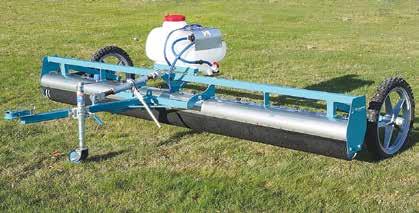
Meanwhile, industry heavyweights are bankrolling this agenda through AgriZeroNZ – a public-private joint venture backed by industry giants like Fonterra, Silver Fern Farms, Ravensdown, ANZCO, Rabobank, ASB, ANZ, A2, BNZ, Synlait and our taxpayer money. Co-ops like Fonterra, Ravensdown and Silver Fern Farms were created to serve farmers, yet today their executives seem more concerned with appeasing bureaucrats and corporate interests than protecting the
grassroots food producers they work for. As Tarawera dairy farmer Wayne Bolt put it: “I’m not leaving Fonterra; they have left us.” Frustration is building, and a mass exodus is looming. Farmers won’t stand by as their co-ops betray them.
These policies and their so-called ‘solutions’ risk devastating consequences for both our farming systems and our agricultural exports. If only our leaders had stood up and stated the truth – that New Zealand farmers are the gold standard in sustainable agriculture, producing the highest-quality, lowest-emission food in




the world – it would be a competitive advantage. Instead, the Government and industry are gambling on synthetic interventions—methane vaccines, boluses, and feed additives—that directly contradict our hard earned “Taste Pure Nature” branding.
How does dosing livestock with chemical additives align with our reputation for high-quality, low-input, grass-fed farming? It doesn’t. Just ask UK consumers what they think of Bovaer. Meanwhile, thousands of hectares are still being swallowed by pine trees, gutting rural communities and permanently removing prime agricultural land from production.
New Zealanders elected the coalition government to put the economy ahead of globalist agendas, yet their actions suggest otherwise.
If National continues down this path, they will lose the rural vote—along with the support of the wider agricultural sector, food producers, and business owners who are being crippled by these policies.
The backlash against increased emissions targets and the government’s refusal to leave the Paris Agreement has been enormous, but industry groups and politicians clearly aren’t reading the room.
Worse still, the Government has locked New Zealand into emissions reductions that will gut our agricultural sector— without even conducting a cost-benefit analysis. An Official Informa-
tion Act (OIA) request confirmed that no government agency has calculated the economic impact of staying in or withdrawing from the Paris Agreement. Read that again. They made a decision that will fundamentally alter our economy, restrict our farming sector and impact every single New Zealander without even checking if it makes economic sense.
When farmers push back, we are met with the same manipulative talking points:
• “We need to do our bit.” NZ farmers already produce the lowest-emission food in the world. We have done our bit! If cutting methane won’t cool the planet but will cost billions, what exactly is “our bit” supposed to achieve?
• “We need to lead the way.” Toward what? Higher costs, lower profitability, and the loss of thousands of hectares of farmland to pine trees?
• “We can’t risk trade.” A complete bluff. The OIA request confirms that no government agency has even calculated the cost of staying in the Paris Agreement versus leaving it.
We need real leadership—leaders who stand up for current sciencebased policy, not those who roll over to global greenwashing. We need industry bodies that represent farmers, not Wellington bureaucrats.
The betrayal by both industry and government will not be forgotten.
• Paige Wills is a sheep and deer farmer in the Waitaki Valley.


tion since 1990.
WE’VE BEEN having constructive conversations with the Government recently around climate change and emissions from food production, but now is the time to see these conversations turn into action.
The current Government has confirmed its commitment to a split gas approach for domestic emissions reductions targets and reviewing New Zealand’s methane targets this year. It has commissioned an independent review of those targets based on the science of warming.
This is all positive. However, we still have emissions reductions targets for methane of 10% by 2030 and 24-47% by 2050. This range has no scientific or reasonable justification.
The independent methane science review, completed last year, suggests a range of 15-24% reduction in methane emissions by 2050 (from a baseline of 2017) would see agriculture contribute no further warming.
A no additional warming target would put agriculture on par with what is being asked of longlived gases. Anything greater means agriculture is being asked to do the heavy lifting in terms of New Zealand’s warming impact on the planet.
We are calling on the Government to urgently amend New Zealand’s domestic methane targets based on the principle of no additional warming, and align that with our international commitments, so that farmers have certainty about what they are being asked to do and that this is no more or less than other sectors of New Zealand.
The Government must also make it clear that it will not price farmers for their emissions if progress is being made towards targets.
B+LNZ analysis based on our extensive stock surveys suggests the sheep and beef sector has already reduced its methane emissions by around 10% from a 2017 baseline – five years ahead of the current 2030 target. This is on top of a 30% reduc-
We know other agriculture sectors are heading in the right direction as well.
It is clear we are going to hit the current 2030 target as a sector, yet we’re currently still faced with the threat of pricing by 2030 hanging over us.
Putting an emissions price on the least subsidised, most carbon efficient producers of animal products makes absolutely no sense and will put us at a further disadvantage globally.
We’ve had carbon pricing through the ETS and offsetting for years, but have we seen a reduction in fossil fuel emissions?
This suggests that maybe pricing is not the best incentive and will undoubtedly lead to unintended consequences.
If a target has already been met, why introduce a pricing mechanism at all?
Farmers need confidence in the future. While recent increases in profitability have provided some short-term relief, ongoing policy uncertainty means many family-run hill country farms are questioning their long-term viability.
The threat of emissions pricing on a sector that has done its part already adds to that uncertainty.
Much of the emissions reductions in the last five years in our sector are due to large scale planting of whole sheep and beef farms into forestry, as offsets for fossil fuel emissions.
We congratulate the Government for its recent moves to restrict this planting that is decimating our rural communities.
In the last few months, however, we have seen a rush of foresters purchase sheep and beef farms before the new rules come into place.
Even with the recently announced restrictions, modelling suggests many thousands of hectares will still be planted each year in order to meet the Government’s net zero by 2050 target for carbon. We will be tracking this closely.
This will continue to see our
and our emissions fall in order to solve another sector’s problem.
The recent afforestation rule changes are positive, but are they are enough?
We urgently need to build confidence in the future, to see emissions reductions targets that are underpinned by sci-
ence based on the warming impact of gases, and the removal of any pricing threats on agriculture.
Some vocal voices in agriculture have called for New Zealand to abandon our international climate change commitments, creating the impression among some Kiwis that farmers don’t want to
•
do their part. These calls reflect growing frustration with inequities and uncertainty.
Farmers are not after a free pass. The science shows we’ve already done our bit and this should be recognised and applauded.
is
of
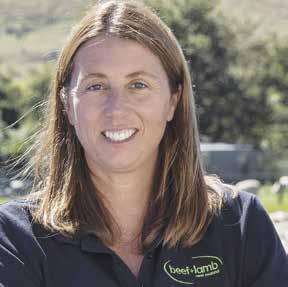


OF dairy products will be included in the negotiations New Zealand has with India on a free trade agreement. However, in the first instance such exports may not feature commodities like whole milk powder, rather more sophisticated dairy products such as ingredients and items for the food service sector.
Following the recent trade mission led by Prime Minister Christopher Luxon, the Government has launched a period of public consulta-
tion to get feedback from businesses, NGO’s and members of the public on what should be included in the negotiations.
Trade Minister Todd McClay, who’s been to India five times since becoming Minister, says with a population of 1.4 billion people, India holds significant potential for NZ and adds it will play a pivotal role in the Government’s goal to double NZ’s exports by value over the next 10 years.
India is the world’s largest milk producer, accounting for 24% of global milk production. It does however import a small amount of dairy

products, buying $50m worth of products from NZ, making up 13% of total Indian imports.
The issue of including dairy in an FTA is
seen by some commentators as very challenging, but Kimberly Crewther, the executive director of the Dairy Companies Association of NZ
(DCANZ) sees opportunities to export some dairy items that would benefit both countries.
She says the fact that negotiations have been launched with the aim of any FTA being ‘comprehensive’ is a positive sign. Crewther says there are a range of areas in the dairy sector where the two counties could work positively together, some of which are outside trade such as animal health and biosecurity.
“Both of our countries have deep interests in that space, so there is a lot we can do together to advance the work we are doing jointly.”
BEEF+LAMB NEW Zealand (B+LNZ) has welcomed the New Zealand Government’s announcement that comprehensive free trade agreement (FTA) negotiations have formally commenced with India.
Since the current Government took office in November 2023, Minister for Trade Todd McClay has visited India five times for eight meetings with his Indian counterpart. Prime Minister Christopher Luxon went to India in mid-March to begin negotiations with Prime Minister of India, Narendra Modi.
B+LNZ chair Kate Acland says this marks a significant step forward for New Zealand’s red meat sector, presenting an abundance of new opportunities for exporters.
“A comprehensive, commercially meaningful FTA could be one of the most important trade agreements
we’ve secured since China. It would unlock an important market that had previously been somewhat closed to us due to the current 30% tariff on sheepmeat.”
With an FTA with India proving elusive over several previous governments, Waitaki MP and former sheep farmer Miles Anderson said that knowing the market and the needs of Indian consumers would be key.
“When I was farming and supplying Alliance, I did a few tours through the meatworks when my stock was killed. The bulk of NZ red meat has been going into China, the US and then Europe over the last few years.
“India is a large market for lamb and mutton. Not so much in the way of beef or dairy. India already has the world’s biggest cattle herd and cattle are sacred to a big chunk of the Indian population.
“But there are only small sheep volumes going into India comparative to other markets, due to tariffs. That’s a good indicator that export companies find it difficult to extract much profit.”
Beyond sheepmeat, India offers huge market opportunities for New Zealand co-products, including pharmaceuticals, wool and pet food.
In return, Indian industrial machinery and electronics and produce such as rice, jute and mangoes could have significant impacts on New Zealand customers and producers.
Acland says that there is immense potential of strengthening trade ties with India, which is set to become the world’s third-largest economy within the next five years.
“A comprehensive and commercially meaningful FTA must deliver
KIMBERLY CREWTHER says NZ produces some 1500 different dairy products and specifications and it’s some of these that India may find attractive to import.
“We are talking about dairy ingredients; products that go through to support further food manufacturing or food service applications which can have mutual benefits in terms of economic development,” she told Rural News.
“The supply of NZ ingredients can help create new businesses, job creation and economic activities within that market,” she says.
For decades, the NZ dairy sector has faced opposition and restrictions when it comes to obtaining FTAs with many countries. The EU, Britain, Ireland, Korea, Japan, Canada and China – the list is long because these countries have many small dairy farms and dairy farmers with significant political power, which governments can’t afford to ignore.
Despite this, Crewther says NZ has been smart around the negotiating table.
tariff liberalisation for these products and reduce non-tariff barriers to ensure increased access for New Zealand exporters.
“By 2030, India is projected to have an additional 140 million middle-class households and 21 million high-income households. With rising demand for high-quality, nutritious sheepmeat and domestic production unable to meet this demand, New Zealand is well-placed to supply premium products to this growing market.”
Anderson says that while India’s rise is certainly the most visible, it would be foolish to overlook the greater Southeast Asia region. “New Zealand produces enough food to feed hundreds of millions of people. Opening up new markets helps New Zealanders; we can sell to the higher value consumers in all those markets
and increase the returns that farmers are getting here in New Zealand.
“You can’t pick and choose who you sell to if you have fewer markets, whereas if you’ve got a larger number of markets interested in your product you can extract a good price for it.”
As the rest of Southeast Asia emerges and becomes wealthier, China and India will be in increasing competition to supply them with food and services. Anderson sees this potential as a healthy thing.
“Since the Second World War the freeing up of trade around the world has led to the biggest drop in poverty ever, lifting people into the middle or upper class.”
He points to recent agreements between Gulf states in the Middle East and Luxon’s latest visit to Vietnam as signs of the impacts of global trade uplifting effects. – Leo Argent

MEET THE Need, New Zealand’s farmer-led food charity, has named Nick Fisher as its new chair.
With a background in the meat industry and rural media, Fisher brings experience and commitment to tackling food insecurity across the country, the charity says. He joined the Meet the Need Board in April 2023.
Fisher takes over from Julia Jones, a founding board member of Meet the Need, who served as chair for past four years. Jones is taking a new role as general manager of Agri-Women’s Development Trust (AWDT).
Originally from Dunedin, Fisher’s family founded Fishers Meats in 1915. He transitioned into radio advertising in 2008, eventually becoming head of rural at MediaWorks.
“One of the reasons I joined Meet the Need is that I understood at a
deeply personal level that you never know when you’re going to need support,” says Fisher.
“When our family business closed, I went from being a managing director of a large family business to having no job or income. You just don’t know what’s around the corner. Meet the Need gives us the ability to help those who need it most at an incredibly difficult and stressful time.”
Fisher sees public awareness as a key opportunity for Meet the Need.
“Not everyone knows who we are yet, despite the great work we do,” he explains. “My goal is to use my network to help grow awareness of what we do and how we do it.”
He acknowledged Jones’ contribution.
“Julia was an effective chair who brought incredible energy and drive for outcomes to her role –

we will miss her greatly,” says Fisher.
“It’s an honour to take on this role and carry the charity into its next excit-
ing phase.”
The Meet the Need board comprises of Fisher, Greg McSkimming, Cheyenne Wilson,
Nicki Mackay, Shaheen Junge, and Jo Hay.
Fisher notes that the board brings together a diverse set of skills and high capability, united by our vision that no one should go hungry or malnourished in New Zealand.
Fisher urges farmers and supporters to remember that food insecurity isn’t always visible.
“You don’t know who needs a little extra help putting dinner on the table,” he says. “It could be your neighbour, someone at your school, or a member of your community who needs access to nutritious food. The ability to provide quality protein to those in need is absolutely vital.
“Our responsibility is to ensure our longevity. I’d love for Meet the Need to still be here in 100 years, thriving and making an impact.”
RURAL TRADER Farmlands has launched an exclusive new casual clothing range across its 42 stores nationwide and online.
Exclusive to Farmlands, the ‘1972 by Barkers’ represents the co-op’s most versatile choice for rural people, it says.
The co-op reports that in the first week, sales have been strong with almost 1000 pieces sold. The iconic Barkers trackpants is leading the top-sellers.
Farmlands chief executive Tanya Houghton says Farmlands stores are in parts of rural New Zealand that a fashion brand like Barkers normally can’t be.
“We’ve created a range of high-quality clothing that’ll work as hard as our farmers and growers. It’ll last through tough conditions on-farm and also look good down at the local pub or restaurant.”
The range has been named ‘1972’ as a celebration of Barkers’ 50-year history of creating quality menswear. Farmlands says the 1972 collection is another way it’s delivering on its mission to bring more value to farmers, joining Farmlands’ stable of exclusive products and brands that now extends across agrichemicals, animal feed, workwear and rural supplies. Barkers chief executive Glenn Cracknell is excited about the collaboration. “It really is the perfect partnership with a highly-regarded New Zealand rural brand.”
The first winter collection, featuring merino knitwear, outerwear and classic shirts, is now available from select Farmlands stores and online.











MAKING IT easier to get things done while protecting the environment – that’s the Government’s promise when it come to the overhaul of the problematic Resource Management Act (RMA).
New planning and environment laws that protect property rights and improve productivity, while reducing red tape and compliance costs for farmers, are coming.
However, at this stage, the farming sector is giving only qualified support to the reforms. For many farmers the devil could be in the detail.
The RMA has become a political football. The last Labour Government passed its own replacement legislation, only for the Nationalled coalition Government to repeal it shortly after. The country has now reverted to the original 1991 law with National proposing to replace the RMA with two new pieces of legislation: a Natural Environment Act – focused on managing the natural environment, and a Planning Act – focused on planning to enable development and infrastructure.
The Government is signalling a radical transition to a far more liberal planning system with less red tape, premised on the enjoyment of property rights.
But for red meat farmers, the idea of mechanisms such as allocation of tradeable rights to individual farms, or cap and trade systems, as a way of addressing water quality issues isn’t a good one. They claim these mechanisms will be expensive, complex and unworkable.
B+LNZ points out that overseas examples have shown market-based models can lead to unintended consequences, driving further intensification of already intensive systems at the expense of extensive farming systems. This may leave stranded land assets or further afforestation in our hill country.
Then there are concerns around proposed changes to fines which could see a significant increase in what farmers could be fined for, regardless of whether any failings were intentional or not.
Concerns around water quality regulations are being raised by dairy farmers. DairyNZ opposes putting a ‘number’ on freshwater contaminants because of the complexity of the contaminants and the freshwater systems in each catchment.
Federated Farmers thinks the Government has delivered a pragmatic and common-sense plan that will put respect for property rights front and centre. Not all farmers agree.
Farmers want clarity and are telling the Government that they want enduring policies that provide long-term certainty for farmers.
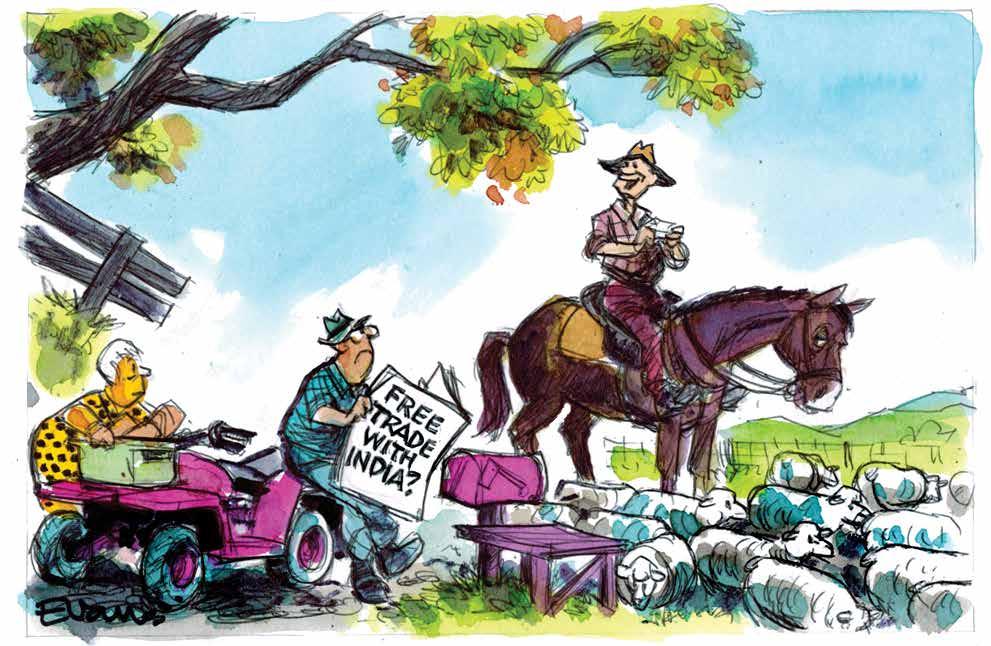
WITH MEDIA putting so much effort into covering the issue of children not really liking the school lunch they never asked for in the first place, it’s understandable they’ve paid little if any attention to the looming threat to the NZ economy – bird flu. Since 2022, bird flu outbreaks have affected over 166 million birds in the US, making eggs more valuable than gold and crossing over to dairy cattle. While the H5N1 strain has not yet infected humans, concerns remain. The US has its ‘best’ people on it: US Health Secretary Robert F. Kennedy Jr. thinks farmers should “let it run through the flock” to identify birds with natural immunity. Actual expert and a former state veterinarian Dr Gail Hansen says this is “a really terrible idea” that would give the virus “5 million chances” to mutate into a more dangerous form.

FINALLY, THE jackboot of State will be lifted from the throat of those trying to grow the economy. Two new Acts—the Natural Environment Act and the Planning Act—will replace the RMA by the end of 2025, with a bill introduced to Parliament in 2026 and passed before the next election. According to RMA Reform Minister Chris Bishop and Undersecretary Simon Court, the new system will be grounded in property rights and will shift the burden of proof to those who currently weaponise the RMA to block development. Cue the wailing from Greenpeace, whose hissy fit nicely sums up the current problem – lack of respect for property rights: “The proposed reforms are based on the dangerous idea that if you own a piece of land, you should be able to do what you like with it.”
PRODUCTION: David Ferguson Ph 027 272 5372 davef@ruralnews.co.nz
Becky Williams Ph 021 100 4381 beckyw@ruralnews.co.nz
HEAD OFFICE POSTAL ADDRESS: PO Box 331100, Takapuna, Auckland 0740
Phone 09-307 0399
PUBLISHER: Brian Hight Ph 09 307 0399
GENERAL MANAGER: Adam Fricker Ph 021-842 226
EDITOR: Sudesh Kissun Ph 021-963 177 sudeshk@ruralnews.co.nz
REPORTERS: Peter Burke Ph 021 224 2184 peterb@ruralnews.co.nz
Nigel Malthus Ph 021-164 4258
MACHINERY EDITOR: Mark Daniel Ph 021 906 723 markd@ruralnews.co.nz
THE PROPOSED RMA reforms took a while to drop but were well signaled after the election. Did that stop councils like Southland’s forging ahead with regional plans that would probably have to be rewritten after the RMA reforms arrived? Like hell. Feds Southland ‘pres’ Jason Herrick and colleagues won a court decision granting a ‘stay’ on rules in the Southland Water and Land Plan until changes can be made to section 70 of the RMA by central government, but the Hound reckons the fight shouldn’t have been necessary in the first place.
The plan, which should have been delayed anyway, would have required Southland farmers to apply for expensive resource consents just to continue farming.
“The activist groups who initially brought this case, like Fish & Game and Forest & Bird, should be hanging their heads in shame,” Herrick says.
AUCKLAND SALES CONTACT: Stephen Pollard Ph 021 963 166 stephenp@ruralnews.co.nz
WAIKATO & WELLINGTON SALES
CONTACT: Lisa Wise Ph 027 369 9218 lisaw@ruralnews.co.nz
Want to share your opinion or gossip with the Hound? Send your emails to: hound@ruralnews.co.nz
IN THE same way that even a stopped clock is right twice a day, economists sometimes get it right. So it was when Cameron Bagrie took one look at KPMG’s recently released Financial Institutions Performance Survey on banks and zeroed in on a key number that suggests banks are so risk averse in this country that they are probably stifling growth and innovation. That number is 0.08%, the ratio of impaired asset expense to average gross loans and advances. Bagrie says this is incredible considering the economy is supposed to have experienced the worst economic climate since the global financial crisis. “What risk have banks been taking?” he asks. Like Bagrie, your old mate reckons we are not going to get the desperately needed appetite to take chances in our economy if the banking sector is so risk averse.
SOUTH ISLAND SALES CONTACT: Kaye Sutherland Ph 021 221 1994 kayes@ruralnews.co.nz
DIGITAL STRATEGIST: Jessica Marshall Ph 021 0232 6446
ROCK DUST is being touted as the new carbon sequestration saviour.
Alongside trees and soil, or even deep injection, the new star is enhanced rock weathering (ERW). All you need to do is grind up the local source of suitable rock (basalt or dunite, for instance) and spread it on your soil.
Beyond the hype (google magic dust…) from overseas, things are rarely that simple.
At the University of Waikato, Professor Louis Schipper is involved in research led by Rutherford Fellow Terry Isson examining the potential of ERW in the Bay of Plenty. “The theory seems sound,” he says. “When some minerals naturally weather, carbon dioxide is captured as bicarbonate that over long-time frames leaches to the ocean.”
This natural process has been estimated by the Intergovernmental Panel on Climate Change to remove approximately 1 gigatonne of the global atmospheric carbon dioxide a year. In the ocean it can counteract ‘ocean acidification’ and, if precipitated, can be sequestered in limestone or dolomite on the ocean bed.
Grinding rock accelerates the rate of weathering.
A review of ERW literature for the Ministry for Primary Industries, senior author Associate Professor Peter Almond, Lincoln University was published in 2024. From field studies (mostly large pots and lysimeters) carbon dioxide sequestration was reported at 0.48.6 tonnes per hectare in the timeframes considered (mostly less than a year, with an outlier at 15 years) with application rates of 50-200 tonnes per hectare of rock. The studies involved a range of rock types, grain sizes, soils, moisture regimes, and methods of quantifying carbon dioxide draw down over different time periods. The results indicated drawdown rates (on a per ha basis) that varied by three orders of magnitude.
This variability empha-

sises the real challenge.
Not ‘just any’ rock will have an effect. Further, basalt and dunite capture different amounts of carbon dioxide through time.
Professor Schipper says that the actual rates of weathering/capture are hard to measure in the field. This means that scientists don’t yet know whether the capture will be fast enough to make a difference in the time frames that are the current focus (by 2050, for the Paris Agreement, for instance).
Dr Col Gray, Ravensdown’s senior scientific officer, has also examined the potential for ERW in New Zealand and points out that there might be agronomic benefits and limitations associated with applying silicate rocks to soils. “Using silicate minerals instead of agricultural lime to increase soil pH could replace the use of lime, which is a source of agricultural carbon dioxide emissions.”
The liming effect is, however, smaller than with traditional lime.
Overseas research suggests that 30 to 40 tonnes of basalt would be needed to create the same liming effect as one tonne of the calcium carbonate generally used.
This also means that putting large quantities of basalt on the soil to achieve carbon dioxide draw down, such as the 200 tonnes per hectare mentioned earlier, could have the same liming effect as 5 tonnes of lime, which might or might not be desirable.
Basalt does contain a range of essential plant nutrients (Ca, Mg, Fe, K, P, Mo) and their release during the enhanced weathering could help support plant growth.
Professor Schipper,
who was on sabbatical in Ireland last year, has seen an increase in international activity around ERW. “There are a lot of start-up companies,” he says, “but they really need to quantify capture rates. And then we need the verification methods to be able to validate the
capture rates.”
Dr Gray agrees. He has noted various verification frameworks being released, just as there were with trees and soil.
“The value of the carbon capture will be critical to making progress. Could it become an extra income stream for pasture soils?
And how much would it cost to mine, process, deliver and spread?”
The research is underway, and in the meantime farmers can ask enthusiastic sales staff the usual question: where is the research for New Zealand in the temperature and rainfall regime on the
soils I’m farming? What data do you have that will support improvements in the agricultural system that I am operating?
Rock dust, magic dust – or is it fairy dust? Time will tell – as it always does. In the interim, all potential tools for carbon sequestration need
exploring.
• Dr Jacqueline Rowarth, CNZM HFNZIAHS, Adjunct Professor Lincoln University, is on the board of directors of DairyNZ, Deer Industry NZ and Ravensdown, and of the World Farmers’ Organisation Scientific Council.

NATIONAL LAMB Day is an excellent idea, but the execution needs work.
New Zealand’s domestic branding, marketing, and supply chains have significant room for improvement, and National Lamb Day is a prime example of how we’re missing an opportunity to connect more effectively with the public.
Over the past few weeks, various media channels and social media have been filled with images of politicians and farmers enjoying premium cuts of lamb.
We’ve had pictures on boats, pictures at parliament, and pictures with tables full of food. Yet, there has been little effort to engage with the average
low-to-middle-income Kiwi beyond a few radio adverts and meat pack giveaways.
What message do we send when politicians and industry leaders celebrate a product that feels out of reach for many? These displays of privilege and gluttony are not doing us any favours. Without a more inclusive approach, we risk alienating the very
people whose support we seek.
Our self-appointed leaders and professional marketers should step back and rethink their strategy. Build a brand and execute it in a way that resonates with all New Zealanders - not just a select few.
Richard Dawkins Blenheim

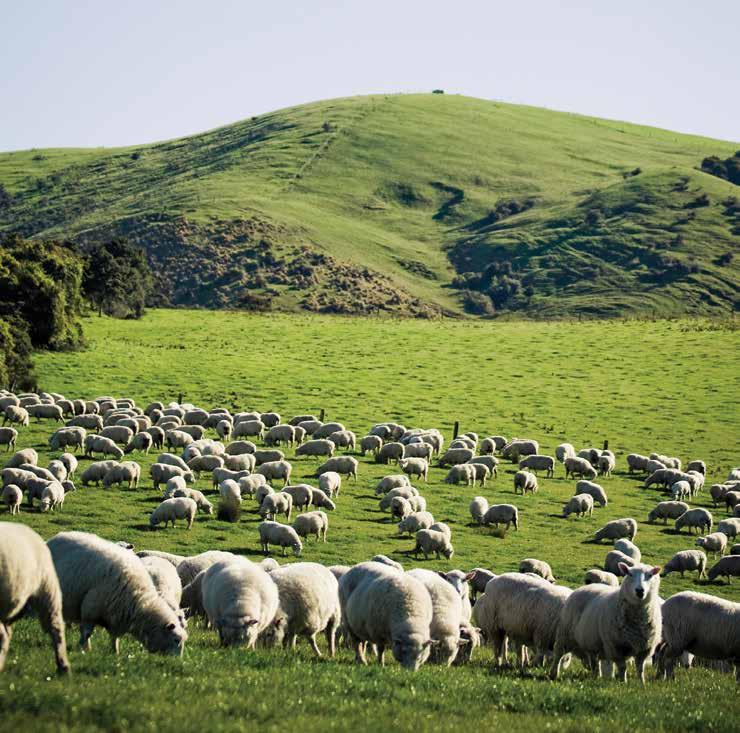

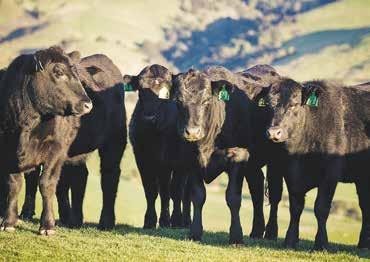
AT LAST, we are getting some sanity back into farm knowledge extension with the recent Ministry for Primary Industries (MPI) activity.
Scientists are good at researching. Farmers are good at farming.
Pre-1984, the gap between them was filled by various extension services who could speak both languages. They also participated and contributed to those Ruakura field days. There were 500 to 600 advisers employed by government departments and commercial firms translating research information into local situations.
That gap still exists. If scientists are to be able to do good science with their limited money, they need to utilise trained extension people to have it used. Garrick Batten, Brightwater
SHAMUBEEL EAQUB is a good economist and an asset to NZ, but he shouldn’t stoke anti-Americanism by addressing farmers; “Do you really think the Americans would want to give us security cover if we’re using their (Chinese) technology?” (Rural News, March 25th issue).
In the first instance, NZ farms use lots of foreign technologies, and choose their own trading partners to boot. Both are things that they would be far more likely to have proscribed if the nation was under a Chinese security umbrella.
But there is also good reason for some technologies to be frowned upon. Bill Clinton announced the creation of the Clipper Chip, and since then it is common practice for communications and computer equipment to enable ‘back door’ proprietary access.
A sophisticated chip today has five billion transistors. A single such transistor measures 2 microns, which translates to fifty transistors equalling the width of one human hair. It is virtually impossible to identify compromised tech at this level.
The Chinese navy circumnavigated Australia firing live rounds in sight of the shore to demonstrate the reach of its military power. This should deliver a sobering message, which is that we can ill-afford losing America’s military support. And our part in that arrangement is, not to kowtow, but to observe practices that promote the security of our alliance, and not undermine it. Similarly, demeaning the effects of the revamping of America’s institutions by claiming that the rule of law is under attack - I don’t think so.
I don’t like Trump, but inaction is not an option if America is to have a sustainable economy. It, like the rest of the world’s nations, is sliding towards insolvency. But Trump is not the only powerful voice in America. Its press and institutions will continue to do their jobs to speak out in defence
Sounds farmer Noel Moleta, farming hair sheep that need no shearing is one of the keys to running a low-input, lowintervention operation in a difficult and highly remote location.
Moleta farms at Waitui, one of the many small bays at the very tip of the Marlborough Sounds.
It is two hours by winding hilly road from Havelock, much of it unsealed and vulnerable to poor weather. Moleta must sometimes resort to sea barge to get stock to Picton.
But by running first Wiltshire wool-shedding sheep, and now Shire hair sheep sourced from Southland breeder Tim Gow, Moleta hasn’t regularly shorn his animals in about 15 years.
He has a long working relationship with Gow, initially buying the Wilt-
shire wool-shedding animals for their ease of management. He was more than interested when Gow managed to produce his Shire hair breed, which he trademarked in 2011.
“As soon as he started breeding hair sheep we started buying them.”
Moleta has recently confirmed his commitment to the breed by buying two more premium Shire rams, at a top price of $8,800.
“We’ve bought some expensive rams over the years but what we do is we just buy the best that we think we can get and put it over a line of ewes and then keep the rams for our breeding rams.”
While Moleta is based at what is one of the most remote northern tips of the South Island, Gow is almost as far south as possible, in western Southland near Manapouri.
“We would generally just pick them from the
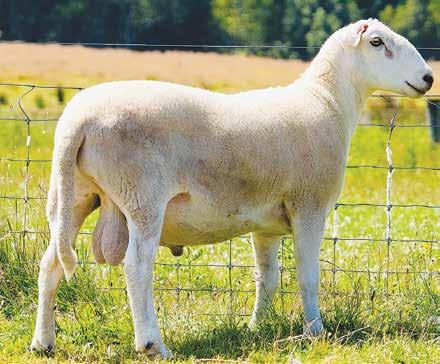
catalogue and buy over the phone,” said Moleta.
“It’s a rather long drive down there. I just went down there maybe a month ago, but prior to that, we only had two trips in all those years.”
Moleta said Wiltshires can be messy as the wool falls off, and they can get sunburned, but that’s
not a problem with the Shires.
“The reason we’ve got the hair breed is they are chunkier, gruntier sheep. Just a better sheep.”
They also do not need tailing because they shouldn’t get dags unless they are undernourished or sick.
Moleta also runs some

SOUTHLAND BREEDER Tim Gow says a recent auction on his Mangapiri Downs Organic Stud Farm was a success, with prices for his Shire breed of hair rams ranging from $700 to $7,000.
The top-priced ram was bought by Wayne Donaldson of Ashburton.
“This strong bidding reflects the increasing demand from farmers looking to transition from wool sheep to low-maintenance, organic Shire hair sheep,” said Gow.
“Mangapiri Downs is now taking bookings for Shire rams and mated ewes, offering farmers another opportunity to secure proven genetics.”
The event was Gow’s second ram auction for the Shire hair breed, which he trademarked in 2011. He had worked since the 1990s to establish the stable genetics for the breed, largely under the guidance of his uncle, the late Australian animal geneticist Dr Scott Dolling.
Angus cattle at Waitui. He also has a block at Tapawera, southeast of Nelson, where he has some sheep but mainly grows hops. A third hill block at Tadmor near Tapawera is running ewe lambs and two-tooths.
He currently has around 5,000 ewes across the three properties.
Waitui was fully organic for many years and ewe numbers have come down from a high of about 5,800 as he has fenced off areas for native bush under the One Billion Trees and Significant Natural Area initiatives.
The economics have been tough. For some years he trucked lambs to ANZCO in Ashburton to take advantage of
an organic premium that ANZCO no longer offers.
“Once that change went through we went back to conventional because I didn’t want to send our stock any further south; Ashburton was enough. So now we just send to the local plant.
“So we’ve gone away from organics,” says Moleta.
ration with commercial farmers for use by commercial farmers.
BEEF + LAMB New Zealand (B+LNZ) has launched a powerful new tool to help commercial beef farmers select the best bulls for their farm businesses.
The launch of nProve Beef dominated the recent Beef Breeder Forum 2025 in Christchurch with speakers outlining the development of the tool and the new breeding indexes it depends on.
Hands-on workshops showed farmers how to use the online interface.
nProve Beef is described as a key component of the B+LNZfunded Informing New Zealand Beef (INZB) programme.
Dan Brier, B+LNZ’s general manager farming excellence, says the tool has been built in collabo-
“nProve has been designed to enable farmers to quickly and easily refine their bull selection based on their specific needs.
“By using simple sliders and filters, farmers can customise what they are looking for in their bull team. With the click of a button, nProve generates a tailored list of stud breeders offering bulls that best match their breeding objectives.
“The launch is timed with bull buying season approaching, ensuring farmers can make informed decisions that will deliver better productivity, efficiency, and profitability for their businesses.”
The tool is essentially a front-end to a database of bulls available to buy,
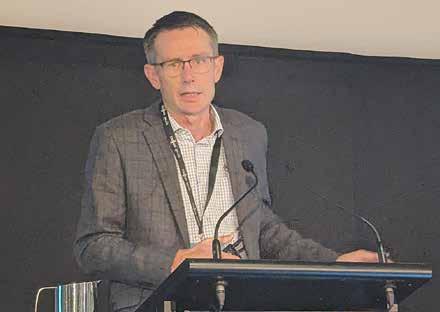
based on the catalogues supplied by the various breed societies.
Fundamental to its worth is the development of New Zealanddesigned beef breeding indexes which assign an economic value to key genetic traits.
The Maternal (NZ$Maternal), Ter-
minal (NZ$Terminal), and Beef-on-Dairy (NZ$BeefxDairy) indexes help farmers select bulls that align with their specific breeding objectives, whether they are breeding replacements, finishing cattle, or supplying beef genetics to the dairy industry.
Brier said it had been
a collaborative effort with farmers, Angus NZ, NZ Herefords, Simmental NZ, the NZ Beef Shorthorn Association, Performance Beef Breeders and AbacusBio.
With almost all the major breed societies on board, the tool is already believed to cover around 75% of the beef
bull market. That will rise to about 90% with the expected inclusion of the Australian-affiliated AngusPRO association.
Brier said the tool was similar to the existing nProve for sheep, and the user data for that showed the worth of the model.
The sheep version had 4,000 users in the last 12 months, in 17,000 separate sessions, which showed a lot of “repeat customers,” said Brier.
They were also averaging seven minutes per visit.
“So, people aren’t just dropping in and saying ‘that’s a waste of my time’ and dropping out. People are going back and getting real value from it.”
Brier said tools were still being developed, such as through the lowmethane sheep program, which would allow
farmers to track genetics across the industry or within their farm.
“That’s going to be valuable for people who want to prove to their customers or whatever that they’ve got low methane credentials on their flock.
“But also, this is the same for any trait. So, as soon as we’ve done the methane, if we choose to, we’ll be able to roll it over to meat quality or facial eczema, or anything else.”
The beef tool is not intended to compare animals across different breeds but Brier said they were working on a multibreed capability.
“Commercial farmers, when we survey them, this comes up that they want us to do this. So we’re still working on a fair and cost-effective way to achieve it.”


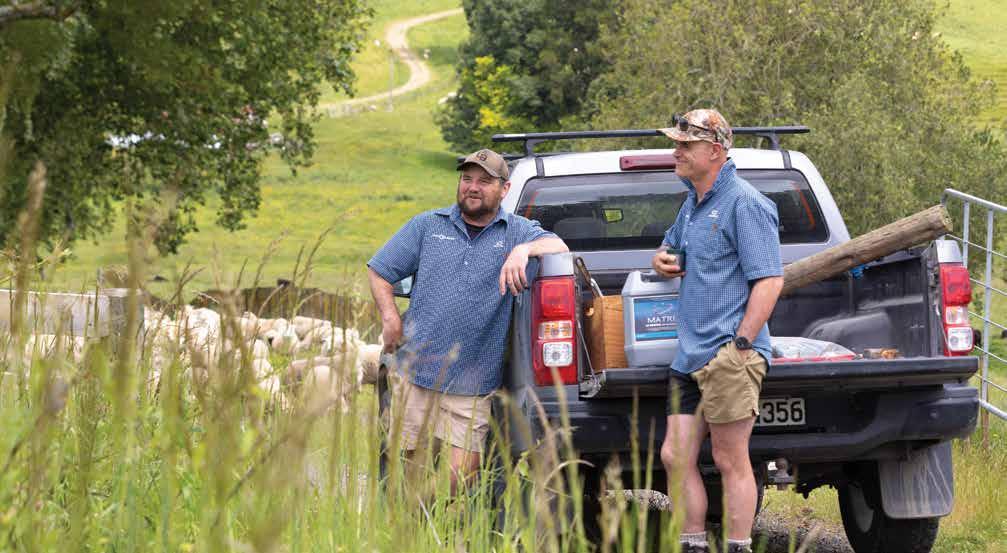
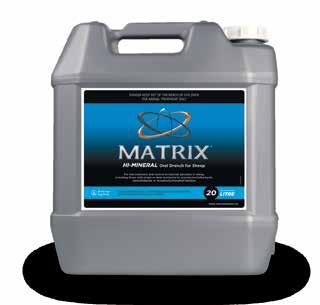
TAKING UP a considerable portion of the Power Farming site at the recent South Island Agricultural Field Days near Christchurch, the Kverneland Qualidisc 21000T trailed compact disc harrow, the first sold in the southern hemisphere, has a working width of 12.25m.
Said to be suitable for cultivation from 3 to 15cm, the unit can also be used for seedbed preparation after ploughing.
The machine layout has four independently mounted frame segments, with pressure on each
segment adjusted pair-bypair via the Ground Contour System to ensure a constant pressure across the full working width.
Turning at the headland is achieved by the four swivelling front wheels of 400-60R 15.5, working in collaboration with the rear roller assembly, meaning despite its large working width, the machine turns tightly on 560 or 710 section oversized transport wheels.
Designed for use with prime movers from 350 to 650+hp, working at typical speeds of 10-15km/ h, with higher speeds creating a “boiling effect” of
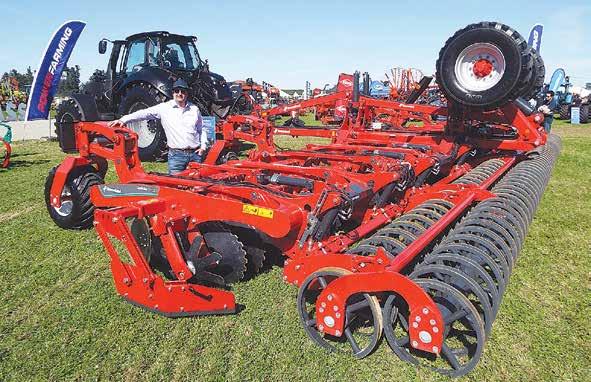
RELEASED INTO New Zealand in 2024, Penta mixer wagons are set to find favour with users who are looking for high specifications and competitive pricing, but more importantly, those looking for a consistent quality of mixing that the distributors claim is among the best on the market.
Established in 1970 in southwest Ontario, Penta mixer wagons were first introduced in 2001 and over the last two decades the company has gone on to expand its range with cultivators, dump box trailers and truck-mounted mixers.
At the heart of the machines are the patented Hurricane vertical augers, said to allow forages to circulate faster and featuring patented cut-outs that allow material to drop through the auger to complement the rotational mixing effect.
Manufactured from coldpressed, 3/4-inch steel, mounted to 3/8-inch thick tube, the augers feature a stainless steel leading edge and bolt-on ‘sweeps’ to ensure forage movement and complete emptying. The augers are also fitted with deep, serrated, heattreated tungsten carbide knives to deal with a wide range of forages.
At the heart of the machine, a 20mm thick floor plate forms the base of the mixing tub, with the walls formed by 6.5mm thick AR-200 Canadian steel platesaid to offer excellent impact and abrasion resistance, rolled to form a profile that complements the augers, with no sharp edges or “dead spots”.
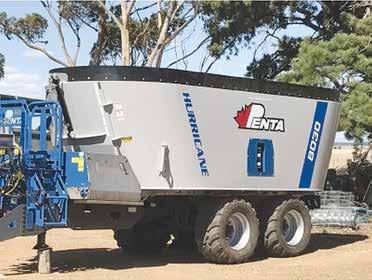
The tub is carried on commercial-grade chassis, built using extensive 13 and 20mm section, North American-grade steels. The design remit is for a smoothly finished exterior profile, with no protrusions that reduce the risk of damage when moving around feed pads, buildings or gateways.
Ahead of the tub, an elevated viewing platform offers safe observation on the contents and the mix as it progresses, while also offering side-to-side access through the machine.
Offered in SD and HD specifications, the former is marketed as a unit with premium specifications at a competitive price. Models range for single-axle, single or twin auger units of 10 to 16 cubic metres, with a 50 to 105hp power requirement, through twin axle, twin auger units from 18 to 38 cubic metres, with a 125 to 230hp requirement.
All TA models feature a wide
opening rear access door. A flagship triple-axle, 3-auger machine offers 47 cubic metre capacity, with front and rear steering axles and a 280hp requirement.
Standard specs for all machines include Digi-Master E-Z 2810 weigh systems with 4 to 6 weigh cells, depending on model. Discharge conveyors use a stainlesssteel pan, complemented by a heavy-duty, C-section (C-188) conveyor chain, said to be one of the toughest on the market, while the conveyors also feature a 3-foot flip up and extension chute to reduce wastage, fed by a wide front door to promote a constant flow and featuring conveyor magnets to capture and ferrous steel objects.
Standard equipment also includes a twin reservoir auto-lube system with tanks recessed into either side of the machine. www.valtonfeedingsolutions.com.
the soil around the discs, the unit weighing around 14.8 tonnes, is capable of high daily outputs.
The 600mm diameter conical discs are 6mm thick and heat treated, with an operating weight of up to 150kg/disc, to help ensure a full cut and thorough incorporation of debris or catch crops.
Designed to maintain a constant working angle, the discs are mounted on angled arms, each fitted with a large maintenancefree double ball bearing and 35mm axle. Special protection to the sides of the arm is achieved by a special 5-lip seal and the bearing protection joint, while the opposite side
features a dust preventing O-ring assembly.
Working depth is achieved via two scales, mounted on the forward gauge wheels and the rear roller, adjusted separately to maintain the balance between the two rows of discs.
Depth adjustment is controlled hydraulically from the cab, allowing prompt changes as field conditions vary.
Final consolidation is achieved with either the 560mm diameter Actipack roller said to be suited to medium to heavy soils or the Actipress option, which features a twin roller layout, offering greater carrying capacity in lighter conditions.
Tractor connections require two double and one single acting outlet, the latter to raise and lower the transport wheels, one double acting supply for pressure adjustment and the other to fold the machine to its 2.95m transport width.

Don’t put good fertiliser on compacted soil which can’t absorb it. If your soil can’t support 15cm root growth and good worm population check for compaction. You could need aeration. In dollar terms, what would 20% production increase mean to your yearly turnover?
YOUR GREATEST ASSET IS THE SOIL YOU FARM. DON’T DESTROY IT!


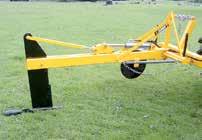
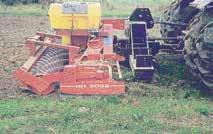
AT A gala evening held at Palmerston North in March, the sporting and rural communities came together to celebrate the Ford New Zealand Rural Sports Awards.
Encompassing a wide variety of events including the likes of wood chopping, harness racing, ploughing, rodeo, sheep dog trials and other more recognised sporting genres, the top accolade of The Ford New Zealand Rural Sports Supreme Award and the RX Plastics New Zealand Rural Sportswoman of the Year went to 29 yearold, Feilding expat Steph Dryfhout.
Steph has solidified her position as one of the world’s top tree climbers, with a victory in the 2024
ISA International Tree Climbing Championship, after double qualifying by triumphing in both the 2024 ISA Asia-Pacific Tree Climbing Championship and the 2023 New Zealand Tree Climbing Championship.
A growing sport worldwide, New Zealand hosts four regional competitions annually alongside its national championship, which determines international representatives. The 2024 International Tree Climbing Championship in Savannah, Georgia, featured 94 of the world’s top climbers from 43 global chapters.
As the undefeated New Zealand women’s champion since 2018, Steph has represented New Zealand at four ITCC world championships, achieving 2nd place

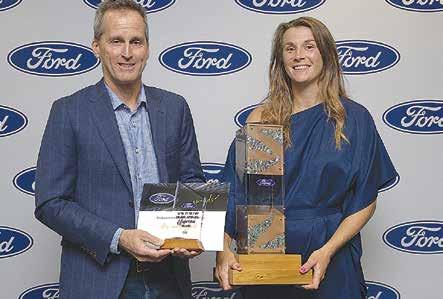
in 2019, 3rd in 2022, and 5th in 2023, before claiming the world title in 2024. Steph is also a twotime Asia-Pacific champion.
Taking out the PTS Logistics New Zealand Sportsman of the Year, well known wood chopper Jack Jordan won

his third consecutive Stihl World Champions Trophy in 2024, where he set a new world record of 52.53 seconds in Milan, Italy. Extending his success beyond the Champion’s Trophy win, Jack also finished second in the Stihl Individual World Championship held in Toulouse, France, accumulating 61 points across six disciplines.
runui.


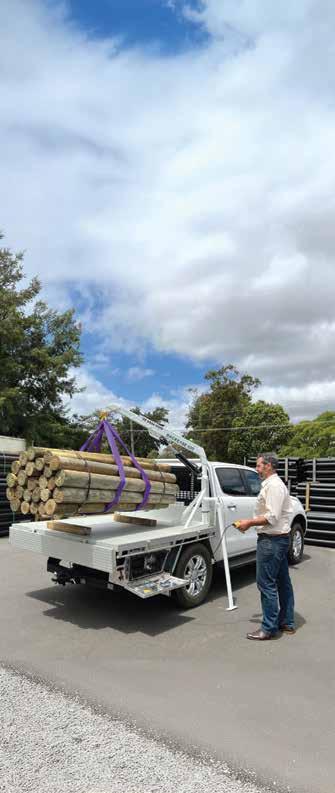



First selected for international competition at only 14 years old, he has since accumulated 13 world titles, while remaining a dedicated farmer, managing a 4,000-acre sheep and beef farm near Tauma-
Other prize winners included Harness Racing Driver Carter Dalgety, who in 2024 made history as the fastest junior driver ever to reach 100 career wins and clinched his first Junior Drivers’ Premiership with 67 wins. International experiences saw him in New Jersey and Philadelphia in the US, before returning home to secure two Group 1 victories, in the $100,000 Invercargill Cup and the $250,000 Auckland Cup, making Carter a deserving finalist for The Fonterra Young New Zealand Rural Sportsperson of the Year Award.
Recipients of the Courtesy Ford Lifetime Legacy Award included 86 year-old Alan Wallace, a retired farmer from Te Awamutu, who has spent over six decades in New Zealand’s ploughing community, shaping the sport, mentoring competitors, and contributing to its legacy.
Alan made history in 1981 as the first New Zealander to win the World Ploughing Championship in Ireland. He represented NZ four times, placing 2nd in England (1971) and 5th in Sweden (1976). Domestically, he was the first North Island competitor to win the NZ Ploughing Championships and won the title four times.
The Award was also bestowed on 83 year-old, Jack Davis of Lowburn, Cromwell, a New Zealand Sheepdog Trials stalwart. Starting out in the sport began in 1952 at 11 years of age, between 1980 to 1985, he and his dogs held the coveted “Top Dog” title in both Heading and Huntaway disciplines for five consecutive years. Jack has also served on the New Zealand Sheep Dog Trial Association Council for over twenty years, while beyond competition, Jack has been an influential judge, officiating across the South Island, including the prestigious South Island Championships in 1999 and the New Zealand Championships in 2001.
Rounding out the trio, Sir Mervyn Tutuiri Church, a youngster at only 75 years old, is a monumental figure in New Zealand rodeo. A shepherd with the Onuku Māori Lands Trust in Rerewhakaaitu, has extended his influence far beyond his local community, reaching the international stage with his induction into the Cowboy Hall of Fame in Colorado, USA. An extraordinary career boasted 30 NZRCA titles, Sir Mervyn’s competitive prowess is legendary. Notably, he holds the Guinness World Record for 15 consecutive AllRound Championships, a feat unmatched in rodeo history. His dominance spanned three decades, excelling in Saddle Bronc, Steer Wrestling, and Rope and Tie events.





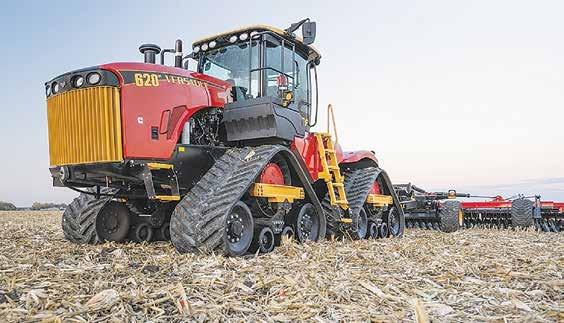
SHAREHOLDERS

Versatile and Farm King equipment manufacturer, fully absorbed by Asko, its Turkish majority shareholder. Although there will be no change to the brands or the dealer networks, the Buhler name is to be dropped. The new company,
Amalco, is a wholly owned subsidiary of Asko Holdings, which purchased 96.7% of the shares of Buhler Industries in December 2023. Asko Holdings also owns Basak Traktor.
The company says the main reason for the change is that substantial investments are required over the next few years to modernise the Versatile tractor plant in
Winnipeg and the Farm King factory in Morden, both located in Canada.
In a move to start both upgrades quickly, with limited disruptions to production, the common shares will be de-listed from the Toronto Stock Exchange and Buhler Industries will apply to cease to be a reporting issuer under applicable Canadian securities laws.
